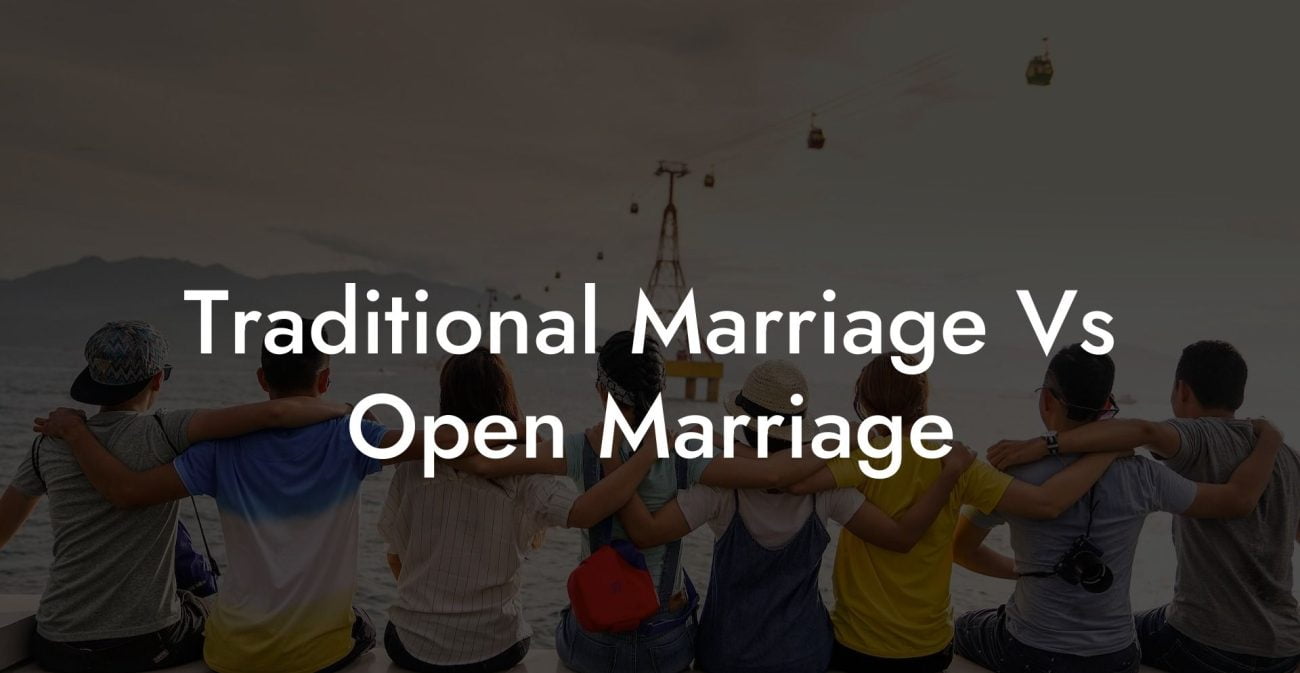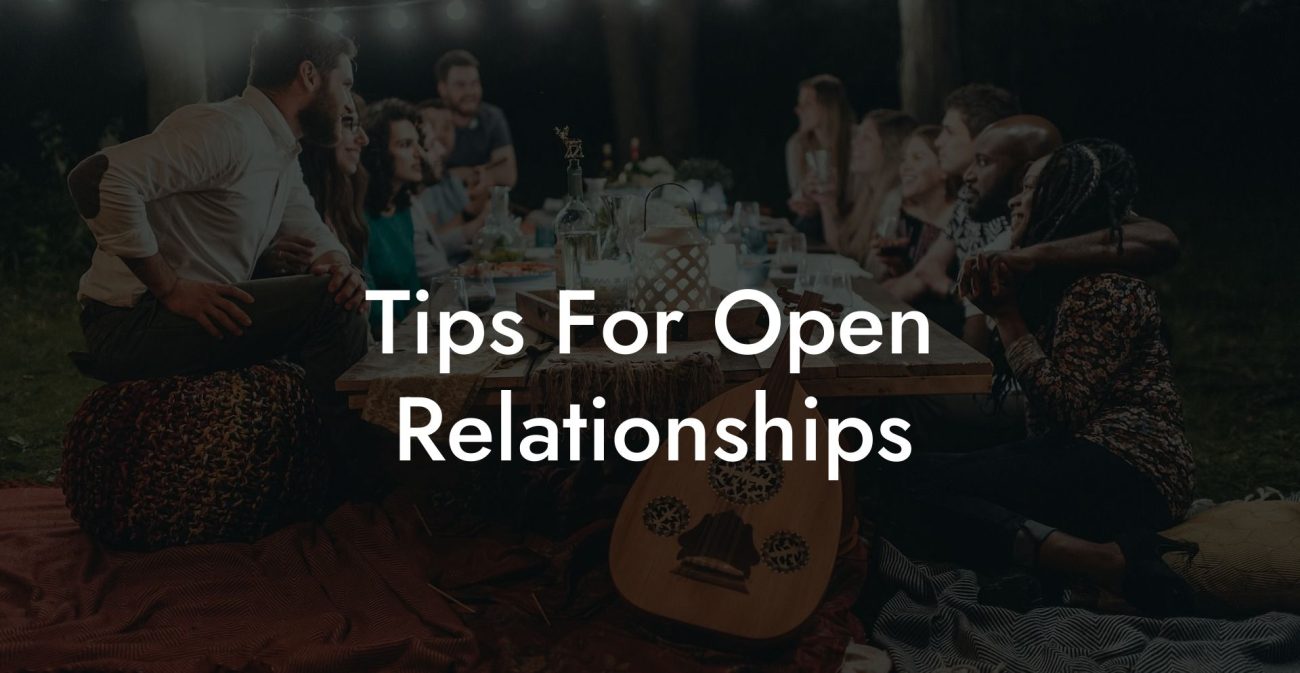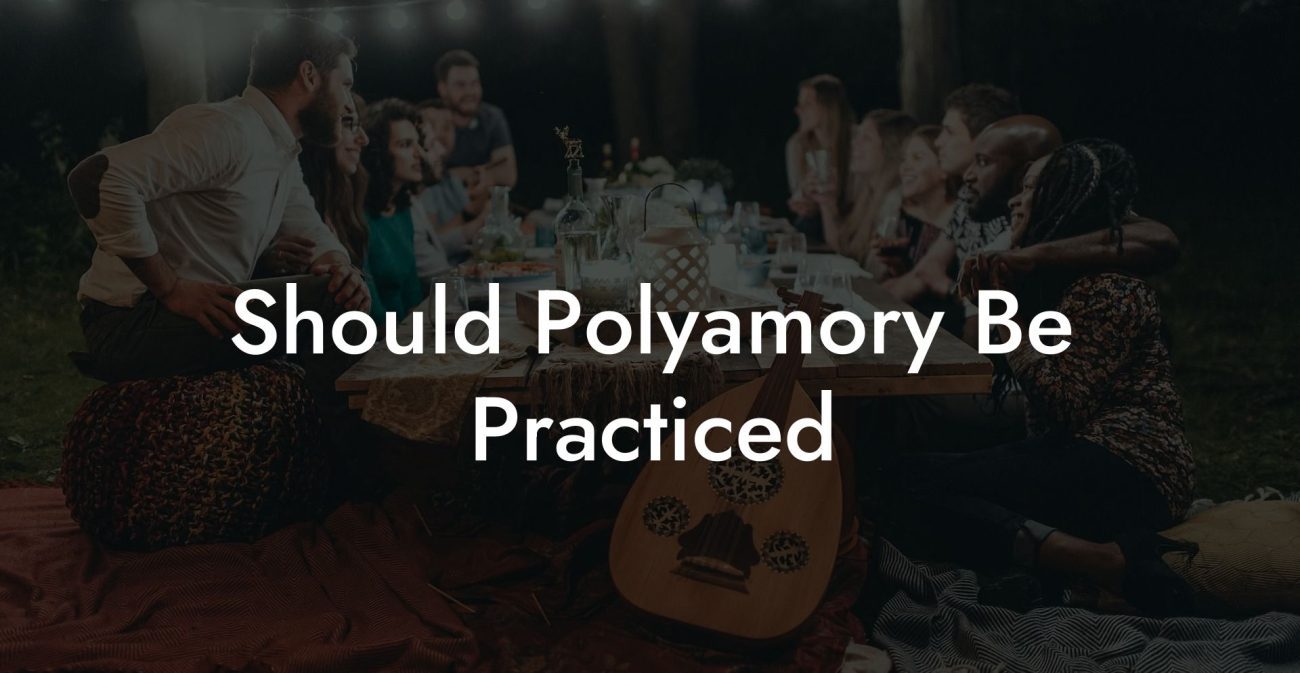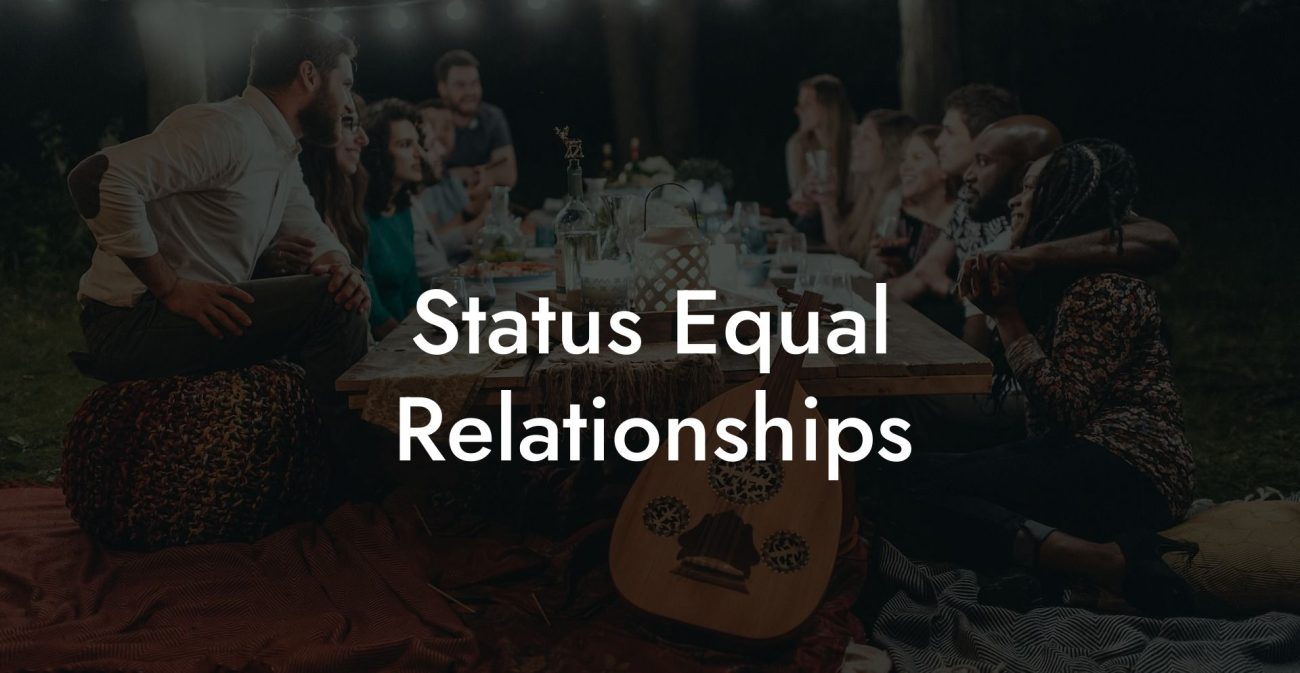Guide to Hotwife Rules

Welcome, adventurous souls! If you’re ready to dive into the world of hotwife dating with clear guidelines and a commitment to safety, consent, and mutual empowerment, you’ve come to the right place. This guide will help you understand the essential rules of the hotwife lifestyle, offer practical tips for establishing boundaries and open communication, and provide insights from real-life experiences and expert advice. Let’s explore how to navigate hotwife rules with honesty and clarity.
Quick Links to Useful Sections
- Understanding the Hotwife Lifestyle
- The Importance of Clear Rules
- Essential Hotwife Rules
- 1. Clear, Honest Communication
- 2. Unwavering Consent and Enthusiasm
- 3. Established Boundaries and Limits
- 4. Mutual Respect and Equality
- 5. Emotional Safety and Aftercare
- 6. Prioritization of Health and Safety
- 7. Privacy and Discretion
- 8. Embracing Empowerment and Autonomy
- 9. Regular Check-Ins and Reassessment of Agreements
- 10. Shared Vision and Mutual Goals
- Best Practices for Implementing Hotwife Rules
- 1. Establish Clear Expectations and Boundaries
- 2. Prioritize Open and Honest Communication
- 3. Emphasize Continuous Consent and Enthusiasm
- 4. Implement Regular Check-Ins and Reassessments
- 5. Maintain Privacy and Discretion
- 6. Support and Empower All Partners
- 7. Adopt Robust Health and Safety Protocols
- 8. Create Aftercare Rituals and Emotional Support Systems
- Handling Emotional Challenges
- Understanding Emotional Challenges in the Hotwife Dynamic
- Strategies for Managing Emotional Challenges
- Advanced Techniques and Expert Insights
- Example Scenarios
- FAQ: Your Hotwife Rules Questions Answered
- Resources and Community Support
Understanding the Hotwife Lifestyle
The hotwife lifestyle involves a consensual arrangement in which a married woman explores sexual encounters with other partners, with the full support and knowledge of her primary partner. It’s not about secrecy or infidelity; it’s about embracing sexual freedom, celebrating empowerment, and enhancing trust through honest, open communication. In this dynamic, clear rules and mutual respect create the foundation for enjoyable and enriching experiences.
The Importance of Clear Rules
Establishing clear rules is crucial for building trust and ensuring that everyone involved feels safe and respected. These guidelines help set expectations, prevent misunderstandings, and provide a framework for handling the emotional complexities that can arise. By outlining boundaries and commitments upfront, couples can enjoy the excitement of the hotwife lifestyle while keeping their primary relationship strong.
Essential Hotwife Rules
Here are the core rules that many couples follow to successfully navigate the hotwife dynamic:
1. Clear, Honest Communication
Why It’s Important:
Open dialogue is the cornerstone of any ethical non-monogamous relationship. It establishes trust, prevents misunderstandings, and provides a platform for discussing desires, boundaries, and expectations. This transparency allows all partners to express concerns and negotiate agreements, ensuring that everyone’s voice is heard and respected. Without such communication, misinterpretations can lead to feelings of betrayal or discomfort.
Example Scenario:
Imagine Maria and John, a couple exploring the hotwife lifestyle. Before Maria’s first encounter, they schedule a relaxed evening where they openly discuss her interests, potential concerns, and expectations from the experience. They establish that John is there to support her decisions and that any feelings that arise will be discussed in a follow-up conversation. This clear, honest conversation sets a foundation of trust and mutual understanding.
2. Unwavering Consent and Enthusiasm
Why It’s Important:
Every encounter must be built on enthusiastic, informed consent from all parties. This rule ensures that decisions are made freely without pressure, coercion, or manipulation. It protects individuals from feeling exploited and reinforces that the hotwife’s autonomy is paramount. Consent isn’t a one-time check, it’s an ongoing process that must be reaffirmed regularly, safeguarding the emotional and physical well-being of everyone involved.
Example Scenario:
Consider Sarah and Mike. Before each encounter, Sarah speaks with her potential partner to confirm that all activities are mutually desired and that she is comfortable with the proposed plans. Mike respects this process by ensuring that Sarah has all the space she needs to decide, and they both check in after the encounter to ensure that everyone felt positive about what transpired. This ongoing consent keeps the experience empowering and respectful.
3. Established Boundaries and Limits
Why It’s Important:
Defining clear boundaries, whether emotional, physical, or logistical, prevents misunderstandings and helps all parties maintain a sense of security. Boundaries might include limits on types of sexual activities, conditions for encounters, or specific rules about how and when experiences are shared. These guidelines ensure that all participants have a clear framework within which they can explore, reducing anxiety and potential conflict.
Example Scenario:
Emily and David agree on specific boundaries: for instance, Emily may decide that certain acts are off-limits, and David might request that no intimate details are shared on social media. They document these limits together and revisit them regularly, which reassures both of them that their values and comfort levels are respected during every encounter.
4. Mutual Respect and Equality
Why It’s Important:
Respect is the foundation of any healthy relationship. In the hotwife dynamic, it’s critical that all individuals involved feel valued and respected. This means honoring each partner’s needs, desires, and feelings without judgment. When mutual respect is present, it fosters an environment where each person can be their authentic self, thereby deepening trust and emotional intimacy.
Example Scenario:
Lisa and Tom treat their arrangement as a partnership where both opinions count. For instance, after an encounter, they discuss not only what went well but also what could be improved. Tom respects Lisa’s experiences and feedback, and they adjust future plans accordingly, ensuring that respect remains the central pillar of their dynamic.
5. Emotional Safety and Aftercare
Why It’s Important:
Sexual exploration can evoke a range of emotions, from excitement to vulnerability. Aftercare, the process of reconnecting emotionally after an encounter, is essential to help partners process their experiences and reaffirm their bond. It might involve cuddling, discussing feelings, or simply spending quality time together. This rule ensures that the emotional aftermath is handled with care, reducing the risk of post-encounter insecurity or emotional distress.
Example Scenario:
After a night out, Jessica and Mark always reserve time for aftercare. They have a tradition of spending quiet time together, where they share their feelings about the evening, cuddle, and reinforce their commitment to each other. This ritual helps them process the experience and ensures that any unexpected emotions are addressed lovingly and respectfully.
6. Prioritization of Health and Safety
Why It’s Important:
Physical health is non-negotiable. Regular sexual health screenings, the use of protection, and discussing any health concerns openly are critical. This rule minimizes the risk of sexually transmitted infections and ensures that everyone’s physical well-being is a top priority. It also builds trust, as partners see that the well-being of each person is taken seriously, reinforcing a culture of care and responsibility.
Example Scenario:
Anna and Rick have a clear agreement: before any encounter, Anna ensures that she is up to date with her sexual health screenings, and Rick always insists on discussing protection methods with any potential partner. This proactive approach means that both feel secure in the knowledge that their physical health is safeguarded, and they continue to support each other’s well-being.
7. Privacy and Discretion
Why It’s Important:
Privacy is paramount in any non-traditional relationship dynamic. Whether it’s to protect personal reputations or simply to maintain a clear boundary between personal and public life, discretion helps avoid unnecessary complications. This rule ensures that details of the lifestyle are shared only with those who have been explicitly given permission, preserving the dignity and confidentiality of everyone involved.
Example Scenario:
Karen and Alex decide that details of their arrangement will remain private. They agree that any discussions about their experiences will occur only in private settings or with explicitly trusted individuals. This shared understanding protects their personal lives from unnecessary scrutiny and reinforces the integrity of their relationship.
8. Embracing Empowerment and Autonomy
Why It’s Important:
A hotwife lifestyle is often celebrated as a space where women can explore their sexuality on their own terms. Emphasizing empowerment means supporting the hotwife’s independence and decision-making. It’s essential that all partners feel empowered to express their desires, set limits, and make choices without judgment. This balance of power helps counteract societal stigmas and reinforces a positive, confident self-image.
Example Scenario:
Nina and Greg work together to create a dynamic where Nina feels fully empowered. Nina sets her own terms regarding which encounters she feels comfortable pursuing, and Greg actively supports her choices by providing encouragement and space to decide freely. Their mutual commitment to empowerment creates a relationship dynamic that honors individuality and strength.
9. Regular Check-Ins and Reassessment of Agreements
Why It’s Important:
People change over time, and so do their needs and boundaries. Regularly scheduled check-ins allow partners to reassess their agreements, address any evolving feelings, and adjust rules accordingly. This ongoing dialogue ensures that the rules remain relevant and that any issues are resolved before they become larger problems. It’s a proactive step to keep the relationship dynamic healthy and adaptable.
Example Scenario:
Olivia and Ben set a monthly “relationship review” where they discuss how the current arrangements are working for each of them. During one session, Olivia expresses a need for more emotional aftercare, prompting them to adjust their routine. This regular check-in process ensures that both remain satisfied and that the dynamic evolves with their changing needs.
10. Shared Vision and Mutual Goals
Why It’s Important:
Aligning on what each partner hopes to achieve from the arrangement, whether it’s enhanced intimacy, personal growth, or sexual exploration, helps keep the relationship focused and rewarding. A shared vision means that all parties are working toward common goals, making it easier to navigate challenges. It also reinforces that the arrangement is a joint venture, where each person’s satisfaction is a collective priority.
Example Scenario:
Laura and Chris spend time early in their journey discussing what they both hope to gain. They agree that enhancing their intimacy and exploring new experiences are key goals. By sharing a vision, they design encounters that are mutually satisfying and continuously check to see if their goals are being met. This joint approach helps them feel united and focused on a common future.
Best Practices for Implementing Hotwife Rules
To successfully integrate these rules into your relationship, consider the following best practices:
1. Establish Clear Expectations and Boundaries
Why It’s Important:
Clearly defining expectations and boundaries lays the foundation for any successful hotwife arrangement. It ensures that all parties understand what is acceptable and what isn’t, reducing the potential for misunderstandings or hurt feelings. This clarity helps in creating a safe space where everyone feels empowered to express their needs and limits.
Example Scenario:
Before beginning their journey, Sophie and Ben sit down to outline their expectations. They discuss what types of encounters are acceptable, set specific boundaries regarding emotional involvement, and agree on how much detail will be shared with each other after each event. This upfront conversation helps both feel secure and respected.
2. Prioritize Open and Honest Communication
Why It’s Important:
Regular, transparent communication is crucial for adapting to evolving feelings and circumstances. It prevents the buildup of misunderstandings and ensures that everyone remains on the same page. This ongoing dialogue is vital for nurturing trust and maintaining a supportive dynamic.
Example Scenario:
After an encounter, Taylor and Jordan make it a habit to have a debriefing conversation. They discuss what worked, any concerns that arose, and what they might do differently next time. This routine check-in not only reinforces their bond but also allows them to adjust their rules as needed.
3. Emphasize Continuous Consent and Enthusiasm
Why It’s Important:
Consent is an ongoing process rather than a one-time agreement. Ensuring that all parties remain comfortable and enthusiastic about each encounter protects everyone’s well-being and reinforces individual autonomy. It prevents any scenario from turning uncomfortable or exploitative.
Example Scenario:
Before and during each encounter, Elena confirms with her partner that she is still enthusiastic about the planned activities. Meanwhile, her husband, Leo, checks in regularly to ensure that Elena feels fully supported. This continuous dialogue about consent fosters a safe and respectful environment.
4. Implement Regular Check-Ins and Reassessments
Why It’s Important:
People’s feelings and circumstances can change over time, so regular check-ins help in reassessing and updating the rules as needed. This proactive approach ensures that the arrangement remains mutually beneficial and sensitive to everyone’s evolving needs.
Example Scenario:
Every month, Carmen and David schedule a "relationship review" session where they discuss their recent experiences, share feedback, and revisit their boundaries. This scheduled reassessment helps them adapt to any new feelings or challenges and keeps their relationship dynamic healthy.
5. Maintain Privacy and Discretion
Why It’s Important:
Respecting privacy is essential in protecting personal reputations and ensuring that the arrangement is managed on your own terms. Discretion prevents external judgment and maintains the integrity of the relationship.
Example Scenario:
Before engaging with a new partner, Mia and Sam agree on strict guidelines for discretion. They decide that all details of their encounters remain private and are only discussed in secure, intimate settings. This approach protects their personal lives and builds mutual trust.
6. Support and Empower All Partners
Why It’s Important:
A key element of a hotwife dynamic is empowerment. Ensuring that every partner feels supported and free to make autonomous choices contributes to a healthy, balanced relationship. Empowerment counters societal stigmas and nurtures confidence.
Example Scenario:
Jasmine takes charge of her encounters with the full backing of her partner, Adam, who actively encourages her decisions. They hold regular discussions about her experiences, which reinforces her empowerment and solidifies their shared commitment to mutual respect.
7. Adopt Robust Health and Safety Protocols
Why It’s Important:
Prioritizing health and safety is non-negotiable in any non-monogamous relationship. Regular health check-ups, safe sex practices, and transparent discussions about physical well-being protect all parties and foster an environment of care and responsibility.
Example Scenario:
Before engaging in any new encounter, Riley ensures that she has had recent sexual health screenings and discusses protection methods with all involved parties. Her partner, Chris, respects this practice, knowing that their mutual health is paramount to maintaining trust and comfort.
8. Create Aftercare Rituals and Emotional Support Systems
Why It’s Important:
Aftercare is essential for processing the emotional impact of intimate encounters. Establishing aftercare rituals helps in reaffirming bonds, alleviating any negative emotions, and ensuring that everyone feels emotionally secure following an encounter.
Example Scenario:
Following each encounter, Avery and Jordan make time for aftercare by spending quality time together, whether it’s through cuddling, sharing a meal, or engaging in a heartfelt conversation. This ritual helps them decompress and re-establish their emotional connection.
Handling Emotional Challenges
The hotwife dynamic, celebrated for its focus on empowerment, exploration, and trust, also brings unique emotional challenges. As couples explore this lifestyle, feelings such as jealousy, fear of abandonment, and emotional disconnect can surface. Recognizing these challenges and developing proactive strategies to address them is essential for maintaining a healthy, fulfilling dynamic.
Understanding Emotional Challenges in the Hotwife Dynamic
Emotional challenges in non-traditional relationships are multifaceted. They often stem from deep-seated insecurities, societal expectations, or even the novelty of the lifestyle itself. By understanding the underlying causes, couples can better address these issues constructively.
Identifying Core Emotional Issues
Common emotional issues in the hotwife dynamic include:
- Jealousy and Insecurity: Feelings that arise when one partner perceives a threat to their role or value.
- Fear of Abandonment: Anxiety that the primary partner may be replaced or sidelined.
- Emotional Disconnect: A sense of drifting apart due to divided attention or misunderstandings.
- Societal and Internalized Stigma: External judgment or internal conflict about participating in non-monogamy.
The Psychological Underpinnings
Many of these challenges are rooted in personal history, attachment styles, and cultural conditioning. Understanding these factors not only helps in addressing the symptoms but also paves the way for long-term emotional growth.
Strategies for Managing Emotional Challenges
Foster Radical Open Communication
Communication is the lifeblood of any relationship, but it becomes even more critical in a dynamic that involves multiple partners. Engage in regular, in-depth conversations about feelings, expectations, and concerns. Create a non-judgmental environment where both partners can speak freely.
Tip: Use “I” statements to express your feelings, such as “I feel insecure when…” to avoid placing blame.
Set, Revisit, and Respect Boundaries
Clear, mutually agreed-upon boundaries can mitigate potential emotional triggers. These boundaries might include what details are shared about encounters, limits on frequency, and guidelines for interaction with third parties. Revisit these boundaries regularly to adapt to evolving emotional needs.
Tip: Schedule periodic boundary check-ins to ensure both partners are comfortable with the current rules.
Implement Structured Aftercare
Aftercare is essential for processing and integrating experiences. This may include physical closeness, verbal reassurance, or simply quiet time together after an encounter. Structured aftercare helps re-establish the primary connection and validate each partner’s emotions.
Tip: Develop a personalized aftercare routine that both partners find comforting and reaffirming.
Practice Self-Reflection and Emotional Regulation
Individual self-awareness plays a critical role in managing relationship dynamics. Techniques like journaling, meditation, and mindfulness can help partners understand their emotional triggers and develop healthier coping mechanisms.
Tip: Consider setting aside time for personal reflection after each significant experience to identify patterns in your emotional responses.
Build and Lean on a Support Network
A strong support network can offer perspective and reassurance. This network may include friends, therapists, or communities familiar with non-monogamous lifestyles. Sharing experiences and seeking advice from those who understand the nuances of the hotwife dynamic can be immensely beneficial.
Tip: Join discussion groups or online forums dedicated to ethical non-monogamy to learn from others' experiences.
Seek Professional Guidance When Necessary
Sometimes, professional help is required to navigate deep-seated issues. Therapists or counselors experienced in non-traditional relationships can provide tailored strategies and facilitate healing conversations.
Tip: Look for professionals who openly support and understand the hotwife dynamic to ensure a supportive therapeutic environment.
Embrace Empowerment and Celebrate Individuality
The hotwife dynamic is inherently empowering, but it can also challenge traditional notions of identity and self-worth. Embrace the opportunity for personal growth by celebrating your individuality and the unique strengths you bring to the relationship.
Tip: Engage in activities that boost self-esteem and remind you of your value outside of the relationship.
Advanced Techniques and Expert Insights
Integrating Emotional Intelligence Training
Emotional intelligence, the ability to recognize, understand, and manage your emotions, is a skill that can be cultivated. Workshops, books, and seminars on emotional intelligence can provide tools to better navigate the intricate emotional landscape of the hotwife dynamic.
Developing a Crisis Management Plan
Prepare for emotional crises by developing a crisis management plan. This plan should include steps for de-escalating conflict, reaching out to support networks, and scheduling immediate check-ins with your partner. Having a plan in place can provide a sense of security and preparedness.
Incorporating Regular Relationship Workshops
Consider attending or hosting workshops with other couples in the hotwife community. These workshops can provide fresh perspectives, facilitate group discussions, and offer tools for building stronger emotional bonds. Learning from peers can be both enlightening and empowering.
Example Scenarios
Scenario 1: Addressing Jealousy Through Scheduled Communication
Lisa has recently experienced bouts of jealousy after her partner, Mark, engaged with another individual. To address this, they instituted a weekly "emotional check-in" where both partners share their feelings openly. This structured dialogue helped Lisa articulate her insecurities, and Mark was able to provide reassurances and discuss adjustments to their boundaries, reinforcing their trust.
Scenario 2: Mitigating Fear of Abandonment with Aftercare Rituals
John occasionally struggles with the fear of abandonment after his partner, Emma, has encounters. To counter this, they developed an aftercare ritual that includes cuddling, affirming conversations, and planning future activities together. This ritual not only alleviated John's fears but also deepened their emotional connection.
Scenario 3: Enhancing Self-Awareness Through Personal Reflection
After noticing recurring feelings of emotional disconnect, Sarah began keeping a daily journal to document her emotions and triggers. Over time, she recognized specific patterns that contributed to her discomfort. Sharing these insights during discussions with her partner, Tom, allowed them to adjust their approach and improve their overall emotional synergy.
Scenario 4: Utilizing Professional Support to Overcome Deep-Seated Insecurities
Michael, feeling overwhelmed by persistent insecurity, decided to consult with a therapist specializing in non-monogamous relationships. With professional guidance, he was able to work through his underlying issues, gain new coping strategies, and eventually communicate his needs more effectively with his partner, enhancing their mutual trust.
FAQ: Your Hotwife Rules Questions Answered
1. What are hotwife rules?
They are a set of guidelines designed to ensure that the hotwife lifestyle is practiced ethically, safely, and with mutual respect.
2. Why are clear rules important in the hotwife lifestyle?
Clear rules build trust, prevent misunderstandings, and provide a framework for managing boundaries and emotions, keeping everyone secure and respected.
3. Can these rules change over time?
Yes, as relationships evolve, it’s important to revisit and adjust your rules to reflect new needs and circumstances.
4. How do we manage jealousy in a hotwife arrangement?
Managing jealousy involves open communication, regular emotional check-ins, and self-reflection. Address your feelings honestly to transform them into opportunities for growth.
5. What safety measures should be followed?
Adhere to strict safe sex practices, get regular STI tests, and maintain open discussions about sexual health to protect everyone involved.
6. How do I coordinate time effectively in this lifestyle?
Use digital tools such as shared calendars or scheduling apps to organize dates and ensure a balanced approach to managing multiple commitments.
7. Can hotwife dating strengthen a primary relationship?
Many couples report that embracing the hotwife dynamic, when managed with transparency and open communication, deepens trust and intimacy in their primary relationship.
8. How important is open communication?
It is absolutely essential; regular, honest dialogue is the key to ensuring that all parties feel secure, informed, and respected.
9. What should I do if I encounter emotional challenges?
Engage in self-reflection, discuss your feelings with your partner, and seek external support from trusted friends or a therapist if necessary.
10. Where can I find more resources on hotwife rules?
Explore books, blogs, podcasts, and online communities dedicated to the hotwife lifestyle for practical advice, personal stories, and expert insights.
Resources and Community Support
- Books & Blogs: Check out titles and blogs that focus on the hotwife lifestyle for firsthand experiences and guidance.
- Podcasts: Listen to shows about sexual empowerment and non-traditional relationships for expert insights.
- Online Communities: Join forums and social media groups to share experiences, get advice, and find a supportive network.
- Therapy and Counseling: Consider consulting a relationship coach or therapist who specializes in consensual non-monogamy for personalized support.
With clear rules, regular communication, and a supportive community, you can confidently navigate the hotwife lifestyle and build connections that are as fulfilling and respectful as they are adventurous.
Lost & confused by all of the terms, types and seemingly made up 3 letter acronyms?? We've got you. Check out our Ethnical Non-Monogamy Dictionary >>
Useful Interruption: Not sure which relationship vibe fits you best? Take our Relationship Test, it’ll give you the real insight into your natural relationship style. Then, dive into our binge-worthy guides (from the tried-and-true to the “wait, that’s a thing?”) and find the perfect relationship type for your life:
- Monogamy
- Open Relationships
- Ethical Non-Monogamy
- Solo Polyamory
- Non-Hierarchical Polyamory
- Hierarchical Polyamory
- Relationship Anarchy
- Swinging
Now back to the main article but yeah take the test...












